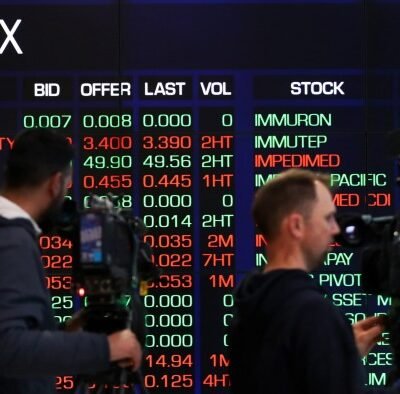Last month, my local Parkrun played host to one of the greatest performances in athletics history.
Clocking in with a time of 26:47 for the 5km, Ben White didn’t make the podium. Indeed, his tilt – which saw him place 261 out of 569 finishers – appears to have gone largely unheralded. I’ve certainly found no mention of it in the regional, let alone international, press.
Instead, what made the feat so monumental was White’s age. As a 90-94 category runner, his time was almost three minutes ahead of the World Masters Athletics record, leading Parkrun’s age grading system to assign the performance a statistically incoherent 132 per cent.
Because fun runs aren’t races, the time won’t appear outside of the local Parkrun and RunBritain websites. Does this invalidate the heroic endeavour? Assuming White didn’t use a bike, skip a lap or enter the wrong age category, that leaves doping. Then again, given the risks of steroid use for nonagenarians, we probably needn’t worry. And perhaps we should accept the wildly improbable.
Which brings us to private equity giant KKR (US:KKR). As readers may have spotted, between a will-they-won’t-they bid for Thames Water, a now-abandoned offer for GlobalData (DATA) and ongoing interest in NHS landlord Assura (AGR), the firm has been all over UK companies in recent weeks.
While this geographical pivot tells an interesting story, it’s not the story I want to tell.
Instead, what interests me is KKR’s incredible reported performance. That’s because since going public in 2010, the company has used its annual report to make a startling series of claims. Each year, without fail, its managed funds “with at least 24 months of investment activity” have generated a “cumulative gross internal rate of return (IRR)” of around 25.5 per cent a year since 1976.
I say “around” here, though the variance is astonishingly low. In fact, in the 15 years the figure has been published, year-to-year changes in the reported return are within 0.2 percentage points. That’s an order of magnitude lower than the volatility seen in the two public equity indices to which KKR compares its returns: the S&P 500 and the MSCI World (see chart).
In truth, it’s not possible to compare KKR’s in-house metric to equity indices, which operate on a mark-to-market basis. But even if we treat IRR as equivalent (a growth rate which, as Oxford university’s Ludovic Phalippou points out, would mean KKR’s first two funds were worth $13tn (£9.6tn) today) then the lack of volatility is at best statistically improbable, and at worst misleading.
Granted, the law of large numbers means stellar returns from KKR’s early years as a totemic exponent of the leveraged buyout – most notably the $25bn acquisition of RJR Nabisco in 1988, later depicted in the book and film Barbarians at the Gate – may flatter the long-term figure.
But the reality is that IRR – which is entirely different to a return on investment – tells us little about real long-term returns. By placing a huge weighting on the cash flows generated by KKR’s earliest funds, neither does it tell us much about recent performance. Nor does it tell us anything about the real-world impacts of market cycles, interest rates, and systematic and idiosyncratic risks that affect all financial assets. We’re simply left with the impression of extraordinary performance.
However, KKR is far from alone in its claims of the superior long-term performance of private equity.
Read more from Investors’ Chronicle
One of the biggest acts in the sector’s myth-building was the 30.4 per cent annual return that Yale University’s endowment fund claimed for its private equity assets in the quarter century from 1987. This reported success, which popularised the ‘Yale Model’ of investing and juiced institutional investors’ appetite for alternative assets, is one reason for private equity’s mammoth growth.
Another important source of validation has come from the investment firm Cambridge Associates, which produces a benchmark index of private equity (PE) returns, “net of fees, expenses and carried interest”. While performance has been choppy in recent times, the story of long-term annualised returns paints a definitive picture: in the 25 years to September 2024, for example, average annual outperformance ranged between 340 and 560 basis points, depending on your region.
There are a few gigantic caveats to these figures. One, while anyone can get exposure to big stock market indices, no one can do the same for PE funds, rendering benchmarks entirely theoretical. Two, PE funds’ heavy historical focus on certain sectors, above all technology, means we aren’t comparing apples with apples. And while this suggests private equity’s acquisition focus has been broadly smart, it doesn’t imply that it is any better at achieving excess returns. Three, the heyday of PE returns came when cheap money made the massive application of leverage a no-brainer.
Finally, PE investors can’t just realise these returns when they want to. Often, they’re also required to cough up new capital. So while the industry’s consistently favourable stake appraisals are heralded for their “illiquidity premium” (and the fiction of low volatility), public equities offer genuine, real-time access to buyers and sellers.
Incidentally, Yale’s endowment fund might be about to find out how tricky the private route is, as it reportedly tries to sell $6bn-worth of its private equity holdings in the secondaries market.
Why this matters to anyone outside multibillion institutional funds is that the industry has begun a concerted push – painted as an act of financial democracy – to let retail investors in. That this is happening amid PE’s struggles to sell pricey assets acquired when debt was super-cheap does not seem a coincidence. Nor do those assets appear healthy: in 2024, US corporate bankruptcies involving PE and venture capital firms hit a record high of 110, according to S&P Global.
Broken trusts?
If there’s pent-up retail excitement for access to private equity, you’d struggle to spot it in the UK’s investment trust sector. Bar 3i (III) – whose majority control of fast-growing discount retailer Action Group has resulted in investors paying up for future unrealised gains – the direct private equity sector has languished at a roughly 30 per cent discount to net asset value (NAV) for almost three years.
While most funds have achieved some exits in this period, a stagnant market for deals has combined with rising interest costs to throttle momentum. High acquisition multiples, particularly in the deal bonanza following the pandemic, have further complicated the investment case for the funds. At the same time, NAV per share growth (after dividends) has gone largely sideways, suggesting that investors’ concerns have been broadly vindicated.
If there is one silver lining, it is that most listed private equity trusts have now quietly parked the use of the IRR metric. There are exceptions. Oakley Capital Investments (OCI), for example, uses its annual report to remind the market of its investment adviser’s “average realised gross IRR of 52 per cent” since inception in 2007 (that is, exclude fund expenses, performance fees, management fees, taxes and “organisational, partnership or transaction expenses”).
But the truth is that the simplicity of the investment trust format means the sector can’t hide behind obfuscation, especially when no fresh equity has been raised since interest rates began to climb. NAV per share should simply reflect the underlying value of portfolio holdings – including both realised and unrealised gains – plus the balance of cash and debt.
Of course, the real proof of that value will be when exits pick up, and trusts are able to return cash or recycle the proceeds into new opportunities. After all, there is such a thing as great performance. Investors simply need to believe in its proper measurement.





